
The Hôtel des Invalides, commonly called Les Invalides, is a complex of buildings in the 7th arrondissement of Paris, France, containing museums and monuments, all relating to the military history of France, as well as a hospital and an Old Soldiers' retirement home, the building's original purpose. The buildings house the Musée de l'Armée, the military museum of the Army of France, the Musée des Plans-Reliefs, and the Musée d'Histoire Contemporaine. The complex also includes the former hospital chapel, now the national cathedral of the French military, and the adjacent former Royal Chapel known as the Dôme des Invalides, the tallest church building in Paris at a height of 107 meters. The latter has been converted into a shrine of some of France's leading military figures, most notably the tomb of Napoleon.
The École spéciale militaire de Saint-Cyr is a French military academy, and is often referred to as Saint-Cyr. It is located in Coëtquidan in Guer, Morbihan, Brittany. Its motto is Ils s'instruisent pour vaincre, literally meaning "They study to vanquish" or, more freely put, "Training for victory". French cadet officers are called saint-cyriens or cyrards. France's other most senior military education institute is the École de guerre (EdG), located in the École militaire complex, in Paris.

Philippe François Marie Leclerc de Hauteclocque was a Free-French general during World War II. He became Marshal of France posthumously in 1952, and is known in France simply as le maréchal Leclerc or just Leclerc.

Marcel Maurice Carpentier was a French Army general who served in World War I, World War II and First Indochina War.

Charles Emmanuel Marie Mangin was a French general during World War I.
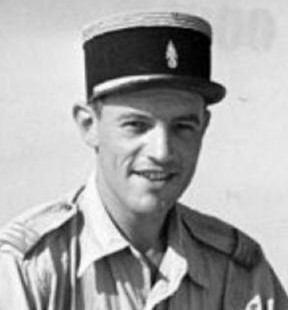
André Lalande was a French Army officer and general in the Chasseurs Alpins and French Foreign Legion. He fought during the World War II at the heart of the Free French Forces, then in Indochina and Algeria.

Marie Louis Adolphe Guillaumat was a French Army general during World War I.
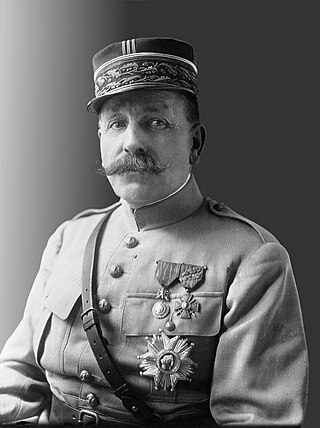
Augustin Yvon Edmond Dubail was a French Army general. He commanded the First Army and Army Group East during World War I.

Alfred Amédée Dodds was the commander of French forces in Senegal from 1890, commander of French forces in the second expeditionary force to suppress the Boxer Rebellion, and commander of French forces during the First and Second Franco-Dahomean War.
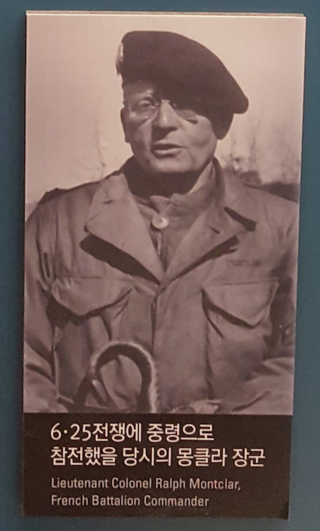
Raoul Charles Magrin-Vernerey, also known as Ralph Monclar was a French officer and 2nd Inspector of the Foreign Legion who fought in World War I, World War II within the ranks of the Free French Forces and led the French Battalion in the Korean War. He was also one of the first senior officers to respond to the Appeal of 18 June.

Jacques Marie Alfred Gaston Faure was a French Army general and skier. He was the leader of the French national Olympic military patrol team in 1936 which placed sixth and in 1961 one of the masterminds of the Algiers putsch.
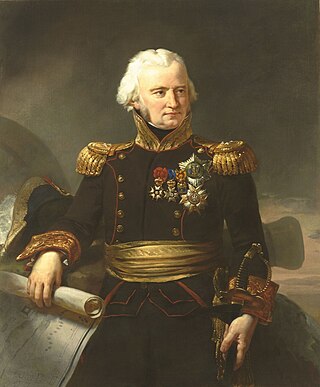
Jean Ambroise Baston de Lariboisière, also Count de Lariboisière, was a general of artillery of the First French Empire. He fought in the French Revolutionary Wars and the Napoleonic Wars and died of fatigue at Königsberg in East Prussia on 21 December 1812, during the Grand Army's retreat from Moscow.
Jeannou Lacaze, was a French Général d'armée of the French Army and Chef d'État-Major des armées (1981-1985), who also served in the French Foreign Legion.

For the French milliner, see Claude Saint-Cyr, For the Marshal of France see Laurent de Gouvion Saint-Cyr

Louis Ernest de Maud'huy (1857–1921) was a French World War I general and the first Chief Scout of Scouts de France.
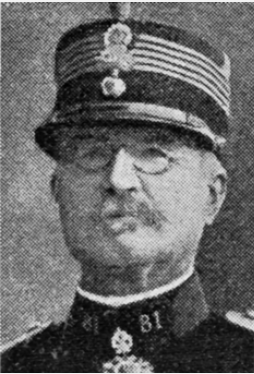
Paul Emile Diou was a French general. Diou entered the army in 1873 and spent much of his early career superintending the training of army personnel. He saw extended service in Tunisia with the Army of Africa and also in the Far East. Diou was praised for his work in Morocco in 1908 and was subsequently appointed to brigade command. In the opening stages of the First World War he led his brigade in an attack on German positions and was mortally wounded.

Achille Pierre Deffontaines was a French general. He served in various metropolitan infantry regiments before becoming a staff officer in several divisions and army corps. Deffontaines became the youngest general in France on his promotion to général de brigade in 1913. He led the 24th Infantry Division into action in Belgium in one of the opening battles of the First World War. Deffontaines was shot in the head while commanding his troops in the field on 22 August and died in hospital four days later. He was the youngest French general to die during the war.
Maurice Schmitt, is a French general and chief of the general staff headquarters of the Armies (CEMA) from 16 November 1987 until 23 April 1991. He was then appointed as Governor of Les Invalides until 1996.
Gérard Pierre Louis François Armand Lecointe was a French général de corps d'armée. He served in World War II and the Cold War and saw colonial service in French North Africa. He was the last commander of French forces in Algeria, and completed his career as commander-in-chief of the French Forces in Germany.

Gustave Paul Lacapelle was a French Général de Corps d'Armée of World War I. He was known for commanding the 1st and 13th Army Corps and for his participation during the Battle of Soissons. He was also a recipient of the Grand Officer of the Legion of Honor.















